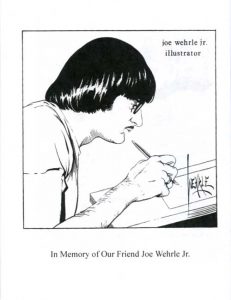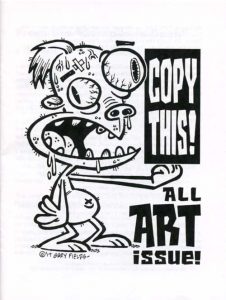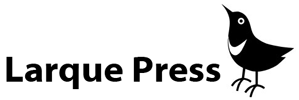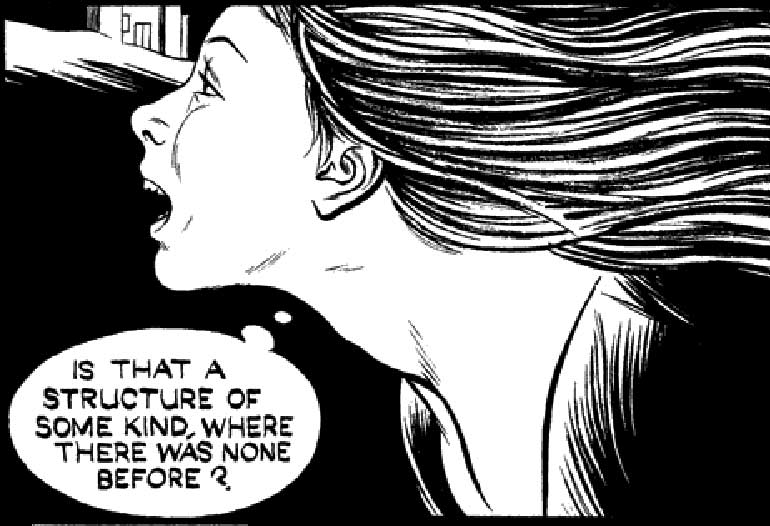In 1981, Joe Wehrle, Jr. (pronounced “Wer-lee”) placed an ad for his Cauliflower Catnip Big Little Book in Alan Light’s adzine, The Buyer’s Guide. It caught my eye and I immediately ordered a copy. When it arrived, it met every expectation promised. Wehrle had successfully captured the best of the quality, tone, and charm of the BLB era with a brand new offering, some 40 years later. I’ve treasured this engaging small press classic ever since. Over the years I kept my eyes open for Wehrle’s next project, but never spotted one. In 2007 I reconnected with Joe through his website “Pencil Portraits” and we became fast friends.
Here’s an excerpt from an interview with Joe about his BLB:
“I guess Cauliflower Catnip is kind of an amalgam from many influences. Sometime in the 1970s I got interested in the work of TAD (Thomas Aloysius Dorgan), and I eventually found a number of his strips devoted to Judge Rummy or Silk Hat Harry, his anthropomorphic dog characters. I wanted to see if I could do something in that kind of period cartoon style, and wound up with Cauliflower.
Next step: having read a lot of hard-boiled detective fiction, I decided to give him a bit of an eccentric nature, in the tradition of Nero Wolfe. Wolfe loves his beer and orchids, Cauliflower his catnip tea, but the stuff makes him loopy and able to see the problem from a different perspective. I thought that was kind of original.
Beyond that, I felt it would be important to know how the guy sounded, and what sort of dialogue we could expect out of him. My mother had passed her love of the playing and singing of Thomas “Fats” Waller on to me, Waller with his ebullient and acerbic comments preserved forever (I hope) on record. Cauliflower might sound a little like that, and I could utilize all the 1920s colloquialisms I’d seen in TAD, Rube Goldberg, Clare Briggs, Bud Fisher, etc., etc.
I began to explore who Cauliflower Catnip was in a series of one-panel cartoons. I’ve long suspected that I’m too slow to do a regular daily strip unless I get an assistant or the concept is extremely simple. I enjoyed turning out the panels, but I could see they’d go nowhere. Besides, I wanted a detective story continuity with Cauliflower. How could I progress the suspense by drawing single panels? Had anyone ever done something like that? Of course they had—and called the results Big Little Books!
So—how to get other people interested in Cauliflower, too? The character cavorted, full-blown, inside my head, and I felt I could sense the mood of the story and the type of cronies and adversaries he would encounter. But I hadn’t yet written a word of it.
The Buyer’s Guide (TBG) had fairly inexpensive ad rates at the time, and I had some old comic stuff to sell. So I created a block ad, with my sale items at the bottom, and a single-panel cartoon above, to scale with the old Big Little Book pages, with short text paragraphs to the right. For several weeks, I don’t know how many, a comic panel and corresponding text appeared in every issue of TBG, and I started to get encouraging mail from fans. As we approached the end of the story, I began to solicit advance orders for the actual book.
Local printers tried to show me sample books with elegant textured and watermarked papers. They didn’t get the Big Little Book thing, or why I wasn’t willing to compromise with the appearance of the finished book. Finally, I just went ahead and ordered several reams of manila paper from my art supplier, let the printer run and cut the interior pages and the cover, then I began binding the copies by hand. I could only afford a run of five hundred anyway, so that wasn’t too overwhelming, I could do a few every day. Biggest problem was in filling an order for a hundred or so from Bud Plant. I think his people wondered why I sent them in two batches, several weeks apart, but it took me that long to catch up.
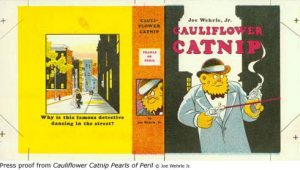
I had drawn the cover illo separately, and made individual overlays for red, yellow and blue. That was probably a bit primitive even then, but that’s how I did it. There’s a smurch in the border of the back cover where I think photo-developing chemical on the printer’s finger also developed a spot on my Duotone overlay vellum. He said he thought it was supposed to be a cloud. But way up in the border???
The book got fairly glowing reviews from Cat Yronwode in The Buyer’s Guide and Dale Luciano in The Comics Journal [issue #95 Feb. 1985], and this helped to bring in a lot of additional orders.
Afterward, I tried to get some other publisher interested in a sequel or even a series, but wasn’t able to line one up. They all knew they couldn’t move a hundred thousand copies of something like this. And later on, I did some new Cauliflower strips and tried to institute a series of mini-comics (the size they used to put in cereal boxes as a premium), but there seemed to be almost no interest in this format, so I shelved the whole idea.
By that time, though, I had brought the drawing style of the characters up to something more like I always thought it should be. When I started Cauliflower, I did it out of a deep affection for old-time cartoon styles, but with absolutely no experience in drawing that way. I had been drawing adventure characters from my imagination, or, if I needed a degree of realism approaching what Alex Raymond got, working from references and photographic models. It was difficult for me at first to abstract the design of the characters to that level of simplicity. People who dismiss big-foot cartoonists as second-rate artists don’t know what they’re talking about!
